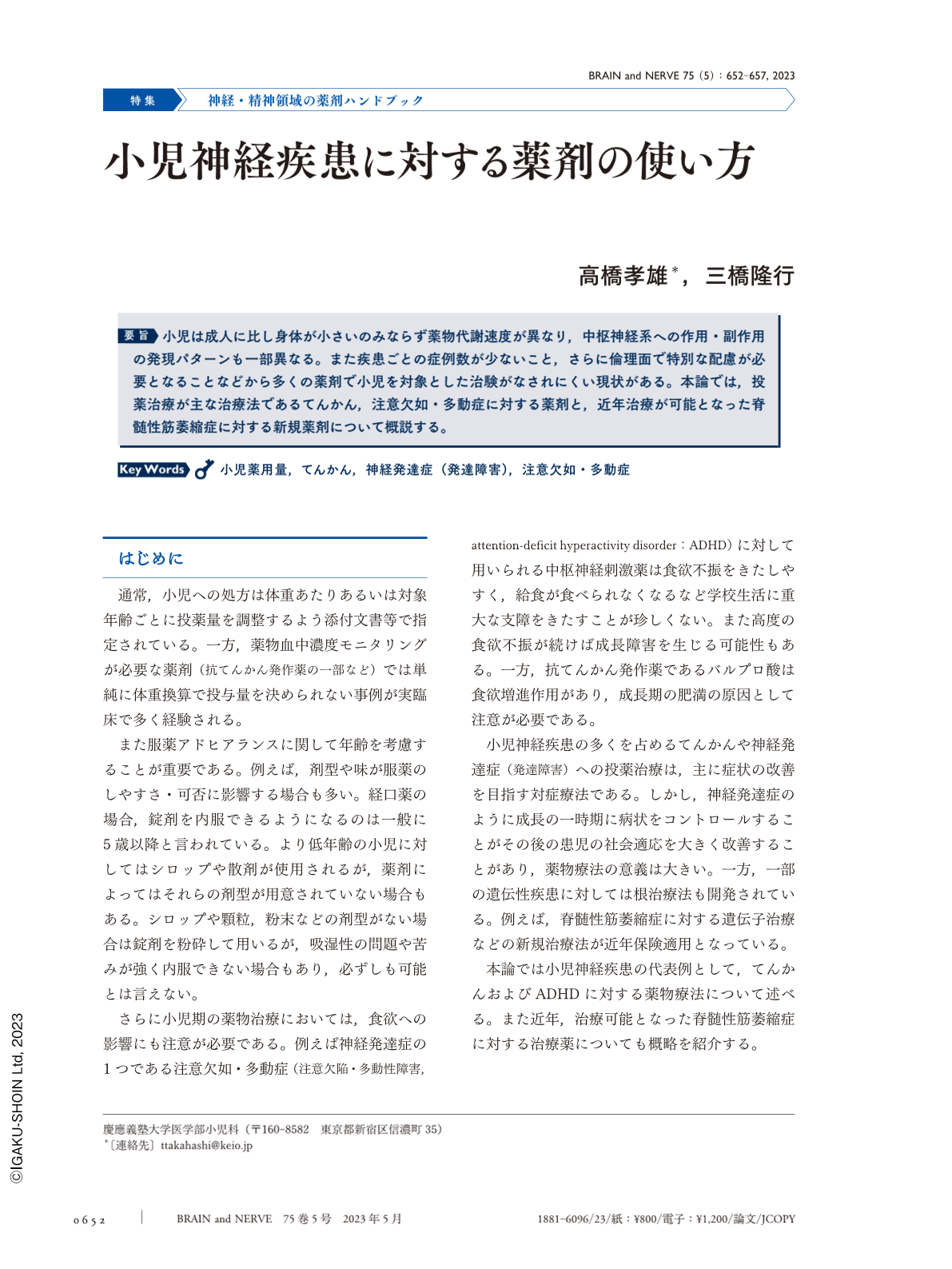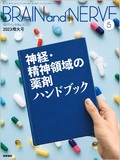Japanese
English
- 有料閲覧
- Abstract 文献概要
- 1ページ目 Look Inside
- 参考文献 Reference
小児は成人に比し身体が小さいのみならず薬物代謝速度が異なり,中枢神経系への作用・副作用の発現パターンも一部異なる。また疾患ごとの症例数が少ないこと,さらに倫理面で特別な配慮が必要となることなどから多くの薬剤で小児を対象とした治験がなされにくい現状がある。本論では,投薬治療が主な治療法であるてんかん,注意欠如・多動症に対する薬剤と,近年治療が可能となった脊髄性筋萎縮症に対する新規薬剤について概説する。
Abstract
In this review, we summarized drug administration strategies for childhood diseases, such as childhood epilepsy and attention-deficit hyperactivity disorder (ADHD). Therapeutic drug monitoring is recommended for most antiepileptic drugs; however, dosage of these in the clinical setting is usually based solely on body weight or age. Other factors to be considered are dosage form and taste; these are particularly important in infants and toddlers as they affect the adherence to a given medicine and may impose a limitation on drug administration. In addition, we should be cautious about such side-effects as the effect on appetite. Special attention should be paid if there is a history of long-time treatment during childhood, because appetite loss or stimulation might have had a substantial negative impact on growth during childhood. We also briefly summarized newly introduced drug therapies for spinal muscular atrophy. These include gene therapy and exon-skipping drugs, which increase the amount of functioning SMN2 protein in skeletal muscles. In particular, the focus of this treatment is on the age of the patient and copy number of the SMN2 gene, both of which are key parameters.

Copyright © 2023, Igaku-Shoin Ltd. All rights reserved.


